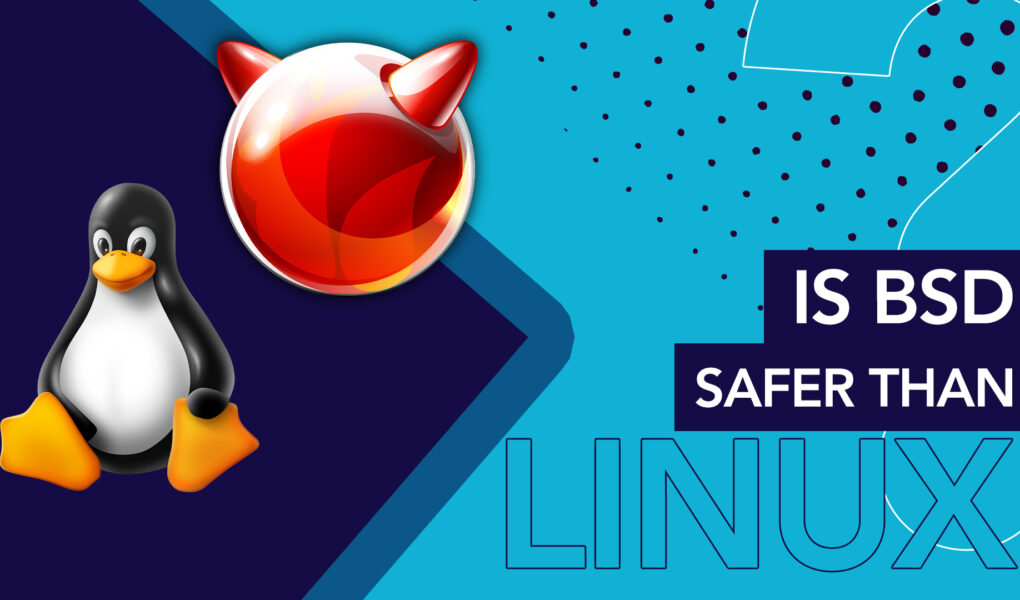The security of an operating system depends upon a variety of factors, and making a definitive statement about whether BSD is safer than Linux or vice versa would be quite complex and nuanced, as both operating systems have their own unique features and vulnerabilities in terms of security.
Both BSD (Berkeley Software Distribution) and Linux are popular operating systems that are known for their security features. However, it’s important to understand that it depends on various factors, including the specific use case, the configuration and hardening of the system, the software installed, and the practices of the users and administrators. BSD and Linux have different design philosophies, which can impact their security posture.
BSD Operating System
BSD (Berkeley Software Distribution) is known for its emphasis on security and stability. BSD operating systems, such as FreeBSD, OpenBSD, and NetBSD, are known for their focus on code simplicity, correctness, and conservative approach to adding new features.
Its security features include a strict file system permissions model, integrated cryptography, and a focus on code correctness and reliability. They are often considered to have strong security features and are commonly used in security-conscious environments, such as firewalls and routers.
Linux Operating System
On the other hand, Linux, which is a kernel, is used as a foundation for various Linux distributions that may have different security features and practices. It has a larger user and developer base, which can lead to more rapid discovery and patching of security vulnerabilities.
Linux distributions, such as Ubuntu, Debian, and Fedora, are known for their flexibility, extensibility, and wide range of software options. It also has a variety of security tools and options available, such as SELinux, AppArmor, and iptables. Linux distributions are also widely used in various environments, including servers, desktops, and embedded systems.
Linux vs BSD: which one is safer?
Here are some points to consider while making a definitive statement regarding the security of these operating systems:
1: Security Design
Both BSD and Linux have been designed with security in mind, and they have strong security features built into their architectures. For example, OpenBSD, a popular BSD distribution, is known for its focus on security and has a reputation for being highly secure. However, Linux distributions like Ubuntu, Fedora, and CentOS also have robust security measures in place.
2: Code Auditing
BSD is often praised for its thorough code auditing process, where the source code is thoroughly reviewed for security vulnerabilities. This is believed to result in a more secure operating system.
On the other hand, Linux distributions have a larger user base, which means there are more eyes on the code, and potential vulnerabilities can be discovered and patched more quickly. Both BSD and Linux communities have active security teams that work diligently to find and fix vulnerabilities.
3: Attack Surface
The attack surface of an operating system refers to the potential points of vulnerability that can be exploited by an attacker. BSD and Linux have different design philosophies, which can impact their attack surface. BSD tends to have a more conservative approach, with a smaller core system and a focus on minimalism, which can reduce the potential attack surface.
Linux distributions tend to offer more flexibility and modularity, allowing users to customize their systems, but this may result in a larger attack surface if not properly configured.
4: Vulnerability Management
Both BSD and Linux distributions have processes in place to manage vulnerabilities and issue security patches. The speed and effectiveness of these processes can vary depending on the specific distribution and its community.
Some BSD distributions are known for their quick response to security vulnerabilities, while some Linux distributions have large and active communities that actively track and fix vulnerabilities.
5: User Configuration
Ultimately, the security of an operating system also depends on how it is configured and used by the end user. Both BSD and Linux allow users to configure their systems in various ways, and the security of the system largely depends on how well it is configured and maintained by the user.
Conclusion
It is quite difficult to say definitively whether BSD is safer than Linux or vice versa. Both operating systems have their own strengths and weaknesses in terms of security. The safety and security of an operating system depend on how it is configured, managed, and used by the administrators and maintained by the end users.
Both BSD and Linux can be made secure with proper configuration, regular updates, and good security practices. It’s important to stay up-to-date with the latest security patches, use strong authentication methods, limit unnecessary services, and follow best practices for securing the system regardless of the operating system chosen.
Additionally, using well-maintained software from trusted sources and following good security hygiene, such as avoiding running processes as the root user, can help improve the security of any operating system.


